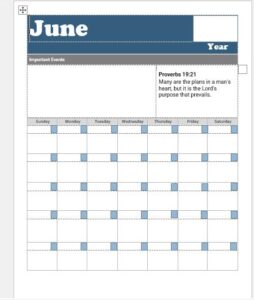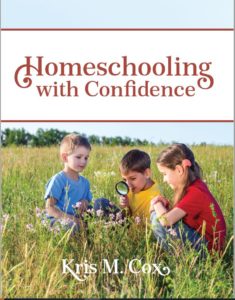
There are so many tips for homeschooling, really too many to share in one post! I’ll share some of the more important ones here, plus tips for teaching children in the younger years. Stay tuned for another post on teaching tips for older students soon!
TEACHING TIPS:
#1- Foster a love for learning:
One of the best ways to foster a love for learning in your child is to stimulate their curiosity and help them discover new information on their own as much as possible, rather than spoon feeding it to them. Sometimes we need to read or teach them information, but other times we can get them to discover it on their own by asking questions such as “Why? “ or “What if…?” or “How did this happen?”. And then give them time to think it through instead of answering it yourself. Or have them hunt for information (teach them how to do this) rather than just telling them the information yourself. Stimulate your child’s curiosity by exposing them to a variety of learning opportunities and help them learn by discovery as much as possible.
#2- Be organized by setting up learning stations:
Setting up prepared learning stations around your home is another great way to encourage learning. Learning stations have all the necessary tools and information needed to learn about something new in the various subjects. So a math station would include math games, flash cards, math manipulatives, and various tools to learn math concepts. An art station would have all the supplies needed to make a beautiful creation. Reading stations have lots of great literature that they can sit down and read when they feel in the mood. A music station would have some musical instruments and /or a CD player with CD’s of various composers that they can listen to. You get the idea. When you have little ones around, you might not be able to keep all the resources for each station out and within easy reach (such as paints, markers, etc.) but you can have them all stored together, so it’s easy to take out a bin and hand it to an older child when they express interest in working on something such as an art project.
#3- Family-centered learning:
Teach all children together for any subjects that you can! Math and Language arts have a specific scope and sequence, so the order you can teach the concepts depends on where the student is at academically. The other subjects such as Bible, Science, History, Geography, Art and Physical education are subjects that can be taught to a wide range of ages at the same time. When teaching the whole family together, you teach concepts that you want them to learn (maybe by reading a historical fiction book for history and then talking through what happened in that historical time period) and then you can do a project together such as building a teepee if studying the Indians. Then you can give more age appropriate assignments to each child for them to do independently related to what was learned(such as a book report for a child in upper elementary, or a research paper for an older student, etc.) Unit Studies, Classical curriculum and Charlotte Mason’s approach are all good choices for curriculum if you want to teach multiple ages together.
#4- Cover several skills and subjects at the same time if you can:
You can cover a lot more in a shorter time if you can find ways to combine subjects into one project or teaching time. For example, if you’re requiring your child to write an essay, then have them write it on something you’re studying in history. Or if your child is memorizing a verse from the Bible, have them use that verse for their handwriting as well. You can use copy work (copying a piece of literature or scripture) to practice handwriting and grammar at the same time. You can even combine math and physical education by having your young child work on catching a ball while counting, or jump on the trampoline while doing math facts.
#5- Remember your child’s age and abilities
We need to be aware of what our children are capable of at the various ages and adjust how we teach accordingly.
*Babies and Toddlers still need our time and attention and it’s hard to find times to teach older children when little ones are present and needy.
- enlist older siblings to help with the littler ones as much as possible.
- give toddlers some special “mommy time” first thing each day, so their little love tank is full. Then they are more likely to play quietly beside you when you’re teaching older kids later.
- have special toy bins for the little ones that only come out when you’re teaching school, maybe even a special bin for each day, so the toys are different each day.
- It also helps to have snacks and a sippy cup of water available within your toddlers reach so they can help themselves if needed.
- your little one’s nap time is a perfect time to try to get some quality teaching time in with older kids as well.
- Bead stringing and lacing cards are great activities for preparing a child to hold and use a pencil (it uses a similar hand position to thread the beads and cards).
*Preschoolers:
- need short teaching times, like 5-10 minute segments of time, and then a break or activity where they can move around.
- 20-30 minutes of structured school time per day is usually enough for this age.
- Much of their learning can be from games, puzzles and activities.
- work on readiness skills such as tying shoes, learning what each of the numbers mean (make abstract concepts concrete with manipulatives) and learning the letters and their sounds.
- Reading readiness activities would include reading out loud to them and letting them narrate (tell you back ) what they heard.
- The skills needed at this age are so simple, you can easily teach concepts in these years with games and manipulatives.
- Teach a letter a week plus the sounds it makes. You can add to this reading stories and doing projects based off of the letter of the week to reinforce what they’re learning and this is a great way for a preschooler to learn and remember their letters. (The letter A: read about ants, alligators, apples, make apple pie, make paper airplanes – just google search what starts with the letter____ and you’ll find a lot of resources out there!)
*Early Elementary Age Children:
- Work on fine and gross motor skills: help them learn to cut with scissors, catch a ball, skip, jump rope, walk on a line or hop on one foot. Some kids at this age will have mastered these already, but it’s not unusual if they haven’t so keep working on gross motor skills.
- This is when they will begin more formal school work and yet much of what they need to learn can be taught through games and play.
- Having too much structure for long time periods can cause burnout in these years.
- Give breaks every half hour, and if you have trouble getting your child to come back after a break, use a timer so they know when you expect them back.
- “Brain Breaks” by Heather Haupt are a great option for breaks as well.
- Children of this age are like little sponges, soaking up information, so this is a great time to have them memorize important facts and information in a fun manner, by using music, games and rhyme.
- Help them learn visual discrimination by matching colors and shapes or matching by size, or let them sort the silverware to be of help in the kitchen!
- Reading out loud to children of this age will help build literacy skills as well as improve their imagination and listening skills.
- Phonics and Math skills should be the focus in these early years, and you can use games as well as formal curriculum.
- If your child is a Wiggly Wilma or Willy, they will learn much better with movement and action.
- The Math Mat from Amazon is a great option for learning math facts for those kids who don’t sit still well.
- Bob books are a great tool for allowing your child to begin blending letters together and becoming successful in reading.
My next post will include teaching tips for upper elementary, middle school and high school students! Stay posted by signing up to receive my blog posts via e-mail. If you have some tips you’d like to share, please send them via the comment area… I’m sure you all have ideas that can be added to what I’ve shared!





